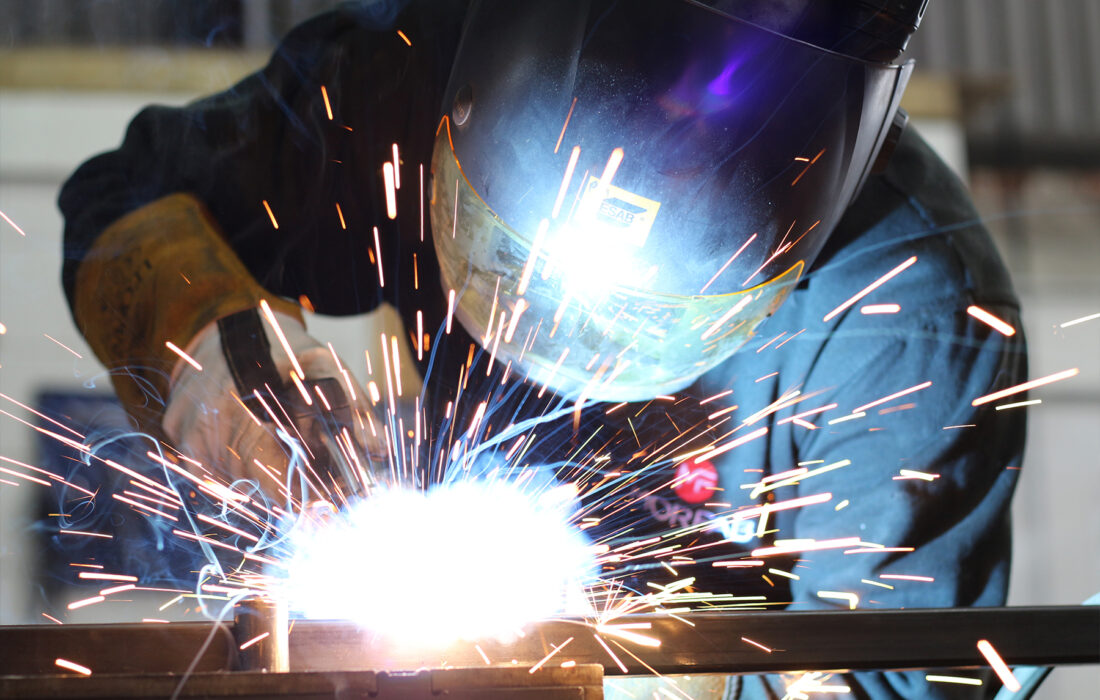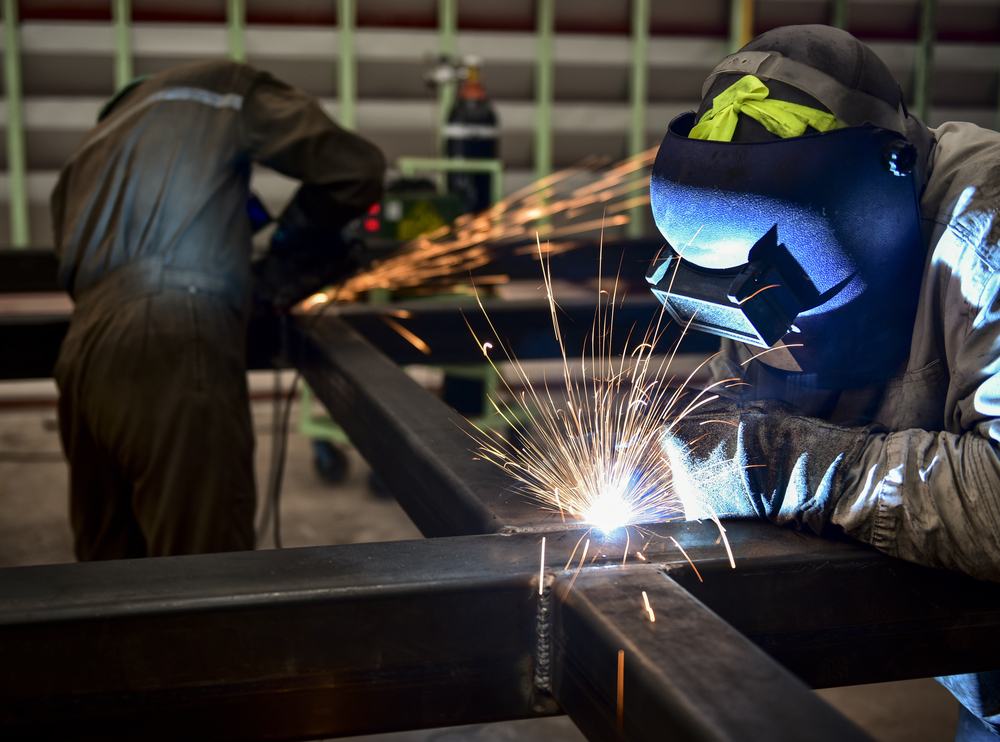Typical Welding Fixing Issues and Just How to Address Them Properly
Welding repair work commonly run into a series of problems that can threaten the stability of the last product. Usual problems consist of poor penetration, porosity, and imbalance, amongst others. Each problem offers distinct obstacles that need particular methods for resolution. Understanding these issues is vital for welders intending to enhance their skills and results. This discussion will discover these usual welding repair problems and efficient techniques to address them.
Inadequate Infiltration
Insufficient infiltration happens when the weld metal fails to fully fuse with the base product, causing weak joints and possible architectural failures. This problem often comes from not enough warm input, incorrect electrode angle, or inappropriate welding speed. Welders might experience insufficient infiltration because of a mistake of the needed specifications for a certain product thickness or kind. Furthermore, contamination on the base product's surface area can hinder effective bonding, aggravating the issue. To resolve insufficient penetration, welders should ensure suitable setups on their equipment and preserve a tidy work surface. Normal examination of welds is suggested to recognize any kind of shortages early, enabling for timely modifications and the prevention of compromised architectural stability in welded settings up.
Porosity
Porosity is a typical defect in bonded joints that manifests as small gas bubbles trapped within the weld metal. This flaw can jeopardize the stability of the weld, leading to decreased stamina and prospective failing under stress. Belgrade. Porosity commonly occurs from contamination, moisture, or improper welding methods, which allow gases to run away into the molten weld swimming pool. To deal with porosity, welders must guarantee proper surface preparation, maintain a tidy working setting, and use appropriate welding criteria. Additionally, picking the right filler material and protecting gas can alleviate gas entrapment. Routine inspection and screening of welds can aid identify porosity early, assuring timely restorative activities are taken, thereby maintaining the high quality and integrity of the bonded framework
Imbalance
Imbalance in welding can develop from various variables, including incorrect arrangement and thermal development. Recognizing the origin triggers is essential for efficient resolution. A number of improvement strategies are readily available to straighten elements and assure structural integrity.
Sources of Imbalance
Welding imbalance typically stems from a range of underlying concerns that can jeopardize structural stability. One primary cause is improper fit-up of parts before welding, which can cause gaps and irregular surfaces. Variants in thermal development during the welding process can also cause distortion, particularly if the materials being joined have different coefficients of growth. Additionally, poor fixturing and securing might fail to hold components safely in location, bring about motion during welding. Poorly kept devices, including welding devices and tools, might introduce incongruities in the weld grain, further adding to imbalance. Lastly, driver error, coming from not enough training or experience, can likewise play a substantial duty in producing misaligned welds.
Improvement Strategies Readily Available
Attending to imbalance efficiently requires a combination of rehabilitative strategies customized to the details concerns at hand. One common approach is using components or jigs to hold elements in the proper position throughout welding, guaranteeing regular alignment. In addition, preheating the materials can help in reducing distortion and boost fit-up. For considerable imbalance, mechanical adjustment techniques, such as using hydraulic jacks or clamps, can be employed to fix the placement before welding. Post-weld warmth treatment may also be required to soothe stresses triggered by misalignment. Finally, mindful inspection and adjustment throughout the setup phase can protect against misalignment issues from becoming considerable issues, promoting a smoother welding procedure and enhancing total structural stability.
Distortion
Distortion is an usual obstacle in welding that can arise from different aspects, consisting of uneven cooling and heating. Recognizing the root causes of distortion is necessary for applying reliable prevention strategies. Resolving this issue not only enhances architectural honesty however likewise enhances the total high quality of the weld.
Sources of Distortion
When subjected to the intense heat of welding, materials typically undertake changes that can bring about distortion. This sensation mostly arises from thermal growth and contraction during the welding process. As the weld area heats up, the product increases; upon air conditioning, it acquires, which can create inner tensions. In addition, irregular heating across a workpiece can intensify these stresses, resulting in bending or flexing. The sort of product additionally plays a considerable duty; steels with differing thermal conductivity and coefficients of expansion might react in different ways, leading to unpredictable distortions. Inadequate joint style and inadequate fixturing can contribute to misalignment during welding, raising the chance of distortion. Understanding these aws a3 0 reasons is vital for effective welding fixing and avoidance techniques.
Prevention Techniques
Efficient prevention strategies for distortion throughout welding focus on controlling warm input and making sure proper joint layout. Keeping a consistent heat input assists to lessen thermal growth and contraction, which can bring about distortion. Making use of techniques such as pre-heating the workpiece can also reduce the temperature gradient, promoting uniform home heating. Additionally, choosing proper joint layouts, such as T-joints or lap joints, can enhance stability and decrease stress and anxiety focus. Carrying out proper fixturing to protect the work surfaces in location better help in preserving positioning during the welding procedure. Lastly, staggered welding sequences can distribute heat much more equally, preventing localized distortion. By using these techniques, welders can considerably reduce the possibility of distortion and improve the overall top quality of their welds.
Fracturing
Fracturing is a typical issue experienced in welding repair work, typically resulting from different aspects such as incorrect cooling rates, material selection, or inadequate joint prep work. The occurrence of fractures can considerably compromise the integrity of the weld, bring about prospective failures during operation. To resolve this problem, welders have to first evaluate the origin, making sure that products are compatible and properly chosen for the details application. Furthermore, controlling the air conditioning price throughout the welding procedure is vital; rapid cooling can generate stress and result in fracturing. Correct joint style and preparation also contribute to minimizing the risk. Executing these methods can boost weld quality and longevity, eventually lowering the chance of cracking in finished weldments.

Incomplete Combination
A substantial problem in welding repairs is insufficient combination, which happens when the weld steel does not sufficiently bond with the base material or previous weld passes - Fabrication. This flaw can cause weaknesses in the joint, potentially jeopardizing the stability of the bonded structure. Variables adding to incomplete combination consist of insufficient warmth input, inappropriate welding method, and contamination of the surfaces being signed up with. To address this concern efficiently, welders must ensure proper pre-weld cleansing and surface area prep work, in addition to change their welding parameters to attain appropriate infiltration and blend. Routine you can find out more assessment during the welding procedure can also assist identify insufficient blend early, permitting prompt restorative procedures to boost the overall high quality of the weld
Overheating
While welding repair work can enhance structural honesty, overheating provides a significant difficulty that can result in product degradation. Too much heat during welding can alter the mechanical homes of steels, causing decreased stamina, boosted brittleness, and bending. This phenomenon is particularly essential in high-stress applications where architectural dependability is vital. Recognizing overheating can involve visual examinations for discoloration or distortion, along with keeping an eye on temperature throughout the welding procedure. To reduce the dangers connected with getting too hot, welders should employ ideal techniques, such as controlling warm input, changing travel speed, and utilizing appropriate filler products. Furthermore, implementing pre- and post-weld warmth treatments can assist bring back material homes and improve the general my explanation top quality of the repair, making certain long-lasting efficiency and safety and security.
Regularly Asked Concerns
What Are the Common Indications of a Welding Issue?

Exactly How Can I Check My Welds for Quality?
To examine welds for quality, one can use aesthetic inspections, ultrasonic testing, and radiographic methods. Each technique ensures structural integrity, identifies defects, and validates adherence to defined requirements, eventually improving the dependability of the bonded joints.
What Safety and security Precautions Should I Take While Welding?
When welding, one should prioritize safety and security by using proper individual safety tools, making sure appropriate ventilation, protecting flammable products away, maintaining a clean work space, and knowing surroundings to stop injuries and accidents.
Can I Repair a Weld Without Renovating the Entire Joint?
Repairing a weld without redesigning the entire joint is feasible, depending on the damage (Welding). Methods such as grinding, adding filler product, or making use of a welding procedure can efficiently attend to particular problems while maintaining the bordering structure
What Devices Are Essential for Reliable Welding Repairs?
Essential tools for reliable welding repair work consist of a welding machine, wire brush, grinder, safety equipment, clamps, and filler materials. Each device plays an essential duty in making certain high quality and safety throughout the repair service procedure. Porosity typically occurs from contamination, moisture, or incorrect welding strategies, which allow gases to get away right into the liquified weld pool. Poorly kept tools, including welding devices and tools, may introduce incongruities in the weld bead, additional adding to imbalance. When subjected to the extreme heat of welding, products often undertake adjustments that can lead to distortion. Splitting is an usual issue encountered in welding fixings, commonly resulting from numerous variables such as incorrect cooling prices, product selection, or poor joint prep work. A significant problem in welding repairs is incomplete blend, which happens when the weld metal does not adequately bond with the base product or previous weld passes.
Comments on “Tips for avoiding distortion in Montana Mobile Welding and Repair Welding projects”